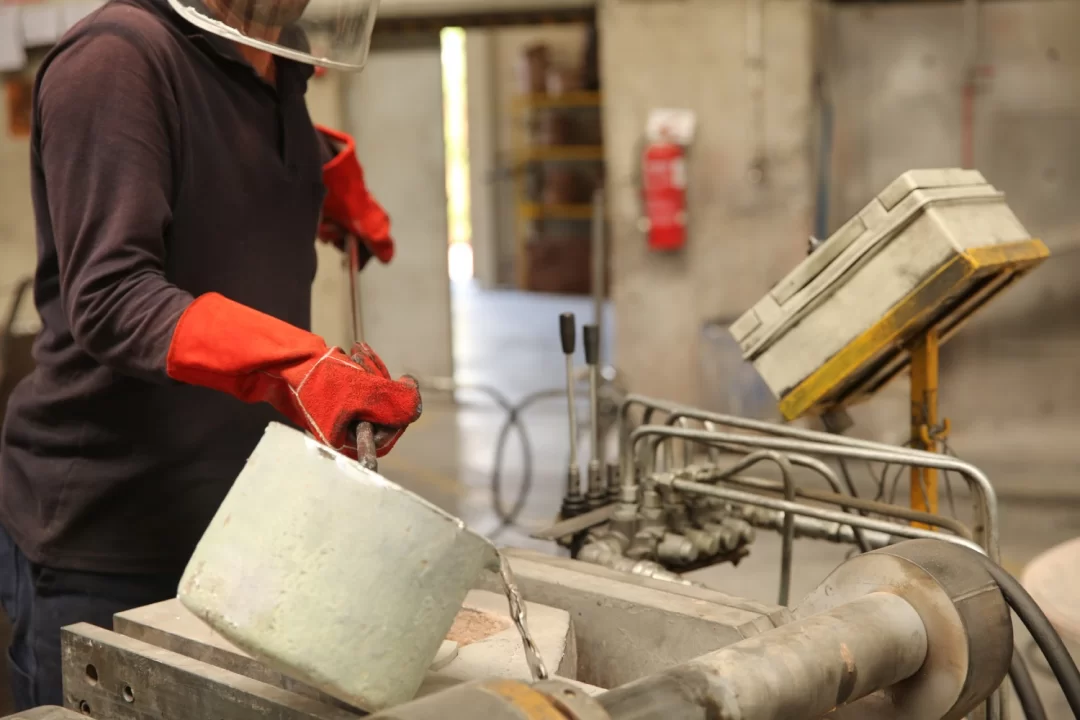There are many methods for producing a prototype of any product. The oldest of these methods is casting. The most common method of casting is sand casting. A sand mold is obtained by preparing a model of the product to be cast, taking into account the shrinkage rates from materials such as wax, and adjusting the mold cavity. After the trough (runner) and gas spaces are adjusted, the material is melted and poured into the space, and after a certain period of time, the excess around the product is removed and the product emerges. Apart from this casting method, precision, continuous, centrifugal, permanent, gypsum, pressure casting methods are also used according to the sector and needs.
Features of the Casting Process
- Precision casting and high pressure casting methods are used in the production of complex products. Pressure and gravity casting are preferred especially for casting products made of aluminum.
- The casting process provides a great advantage in the production of a material with a complex structure.
- The casting process has a very wide range. Products from very small parts to very heavy tonnage materials can be produced.
- It facilitates the production of parts with complex and different internal structures.
- All alloys can be cast. Obtaining materials such as cast iron is carried out only by casting.
- It contributes to mass production.
- The casting process is a work that requires great attention. Therefore, a professional team is needed.
- In adverse cases such as durability or large pores, additional processing may be required.
- It is very difficult to produce a material with very thin sections by casting.
- If a small number of products are required to be produced, the cost of mold and casting processes is high. However, it is an ideal process for a material that cannot be produced by any other method.
According to the technical specifications of the requested part, the most suitable casting method is decided in the mold design section. The desired alloy is prepared before casting and checked in a spectral analyzer, samples are kept for 5 years (longer if requested) for traceability, and they are cast in European norms (Euro Norms) and heat treated according to demand.
Casting methods
Gravity Permanent Mold
Castings are made by connecting the manufactured permanent molds to permanent mold machines of various sizes and dimensions. In general, it is a preferred casting method when many parts are to be produced. The material of the permanent mold is made of special steel or cast iron in accordance with the requirements of the material to be cast. Thanks to permanent mold free casting, it is robust and has a good surface quality. It is a type of casting that allows casting in a smaller area, and its production speed is high. In general, it can be preferred in the production of small and medium-sized materials.
Sand Mold Free Casting (Gravity Sand Mold)
Furan resin, green sand or amingaz core sand are castings made into molds. After using the molds prepared in the 6 tons of furan core production and reclamation facility per hour, 90% is recovered with the reclamation system.
Low Pressure Die Casting
There are 4 low pressure machines, one of which is Kurtz Ersa brand low pressure machine with two furnaces of 900 kg.
High Pressure Casting Method / Injection
High Pressure casting method can be cast with 2 injection machines, one of which is 250 tons and the other is 550 tons (column spacing is reinforced as 750 tons). The mold used in high pressure casting is generally made of steel. It is a casting method that is applied by the method of removing the part from the injection machine after the molten aluminum is filled into the cavity in the injection molding machines with high hydraulic pressure and after cooling.
Tilt Casting Method
It is done with a tilting casting machine. The principle of this type of casting is that the molten metal enters the casting process with the effect of gravity. In addition, it is a casting process with perfect properties, in which it can be transferred to a mold by simple mechanical means without surface turbulence. With this feature, it has the ability to produce very high quality and high strength castings.
Heat Treatment
In order to change the metallurgical structure and mechanical properties of the cast part, there are 2 solution heat treatment furnaces and 1 aging furnace for the heat treatment process.




